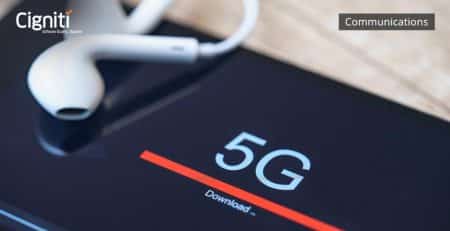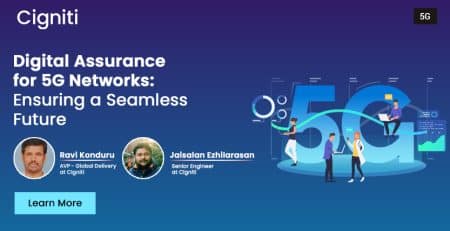The importance of Quality of Experience for 5G deployments
The 5th Generation (5G) mobile network is the next step in the evolution of mobile technology that connects virtually anyone and everything, including objects, devices, and computers.
While no person or a company owns 5G, there are several organizations within the mobile ecosystem that are thriving to bring 5G to life.
As of today, 5G has been deployed in more than 60 countries and we are witnessing a much faster adoption and rollout when compared to 4G.
A new study from Juniper Research says, “Operator billed revenue from 5G connections will reach $357 billion by 2025, rising from $5 billion in 2020, its first full year of commercial service. By 2025, 5G revenue is anticipated to represent 44% of global operator billed revenue owing to rapid migration of 4G mobile subscribers to 5G networks and new business use cases enabled by 5G technology.”
From a technology standpoint, 5G brings up to 10Gbps of capacity which is approximately 10 times of what is possible with 4G networks.
The 5G wireless technology promises multi-gigabit per second peak data rates, vast network bandwidth, increased reliability, ultra-low latency, and a more consistent user experience to many users.
With 5G moving from the laboratory to the real world, the technology is not just about lower latency and higher bandwidth, it is also a wireless revolution that will enable automation, robotics, mixed reality, and many other industry applications.
As per the analysis by IHS Markit, an American-British information provider, ”The growth trajectory of sales enabled by 5G remains virtually unchanged, reaching $13.1T in 2035, despite the downshift in the long term growth trajectory of the overall global economic output caused by the pandemic.”
5G also complements other emerging technologies such as IoT (Internet of Things) and AI/ML (Artificial Intelligence/Machine Learning) to further drive digital transformation both internally within an organization and externally in customer engagements.
Quality of Experience (QoE) and Quality of Service (QoS)
While 5G promises a whole new equilibrium of enhanced customer experience that was never witnessed before, measuring its QoE remains a puzzle.
The 5G architecture implements end-to-end network slicing to ensure QoS for all the new use cases. To meet service specific performance objectives, virtual networks are created that receive dynamically allocated end-to-end virtual resources. Emergency services would receive a high priority slice when compared to other less critical services, thus ensuring higher QoS.
Research author from Juniper, Sam Barker, remarked: ‘Operators will compete on 5G capabilities, in terms of bandwidth and latency. A lesser 5G offering will lead to user churn to competing networks and missed opportunities in operators’ fastest-growing revenue stream.’
While QoS is evaluated by networks monitoring Key Performance Indicators (KPIs) that reflect network measurements, these KPIs do not necessarily co-relate to end-user QoE.
Even in 5G, network KPIs that are optimized by a service-based network do not guarantee higher end-user QoE. Network slicing will not solve all these issues when resources inevitably become constrained. The granular visibility that is needed to accurately evaluate and optimize end-user QoE is not possible with network KPIs.
Incorporate capabilities to overcome these challenges
To overcome the challenges encountered in 5G, there is a need to incorporate testing capabilities in focus areas across phases –
Phase 1: Verification & Validation: Verification of virtual network functions (5g Lab system Verification & 5G Field Validation) and network services to ensure immediate quality and reliability once the network is deployed. The focus area for quality assurance in this phase would encompass network virtualization, network performance, baseline & benchmarking, and network automation.
Phase 2: Deployment & Activation: Upon successful 5G network and infrastructure deployment – activation of 5G test tools, tools/platforms to monitor network performance are mandatory. The prime area of focus in this phase comprises performance monitoring, advanced fiber testing, radio testing (C-RAN), and compliance testing.
Phase 3: Assurance & Optimization: Verification of virtual network functions (5g Lab system Verification & 5G Field Validation) and network services to ensure immediate quality and reliability once the network is deployed. User experience, IoT assurance, robotic automation, device testing, and user acceptance testing are the focal areas during this phase.
According to Gartner, “5G phones will account for 35% of the global smartphone sales. Further, 5G phone sales are expected to double compared to 2020, thanks to the broader availability of 5G networks and the lower starting price of 5G phones – around $200.”
Sustainability benefits delivered by 5G
While we have emphasized on the importance of QoE for 5G deployments, below are some of the sustainability benefits delivered by 5G across enterprises.
Eliminating Emissions: Efficiencies in 5G network equipment can help reduce carbon emissions from mobile networks by 50% over the next 10 years.
Reducing Pollution: 5G drone using AI/ML performs targeted weed eradication and can reduce pesticide and herbicide usage by 50% thus reducing pollution. Also, 5G enabled Intelligent Transportation System can lead to 15% less traffic resulting in less pollution emitted by vehicles.
Increasing Energy Efficiency: 5G enabled mIoT (mobile Internet of Things) devices are developed to have a longer battery and device lifetime compared to previous technologies enabling increase in energy efficiency.
Wrapping up
As most 5G applications are industry specific that link closely to business outcomes, it is imperative to ensure successful deployments and unlock new innovations. Organizations could use the benefits of 5G to their advantage and gain an edge against competitors.
Would you be interested in a 5G offering that can measure customer experience and provides a sentiment view on a given consumer’s experience? An offering that can help you take a lead in the digital race by generating digital customer satisfaction score and ratings/sentiment prediction?
To know more, talk to our quality assurance experts. They will help you provide a solution for your business and will demonstrate how to scale the quality of experience for 5G services.





Leave a Reply